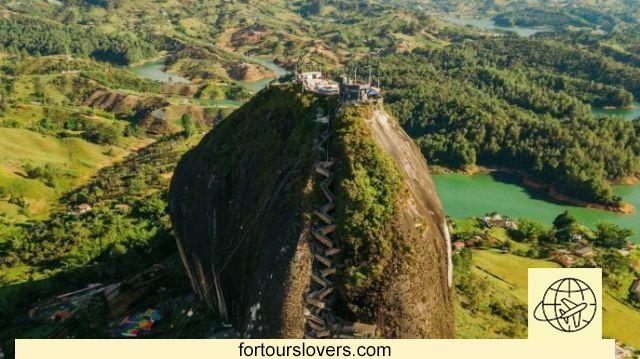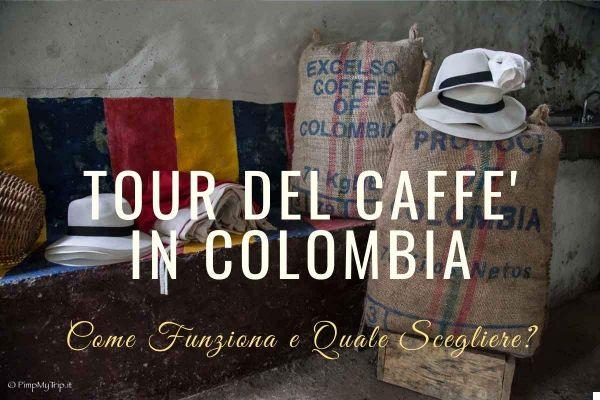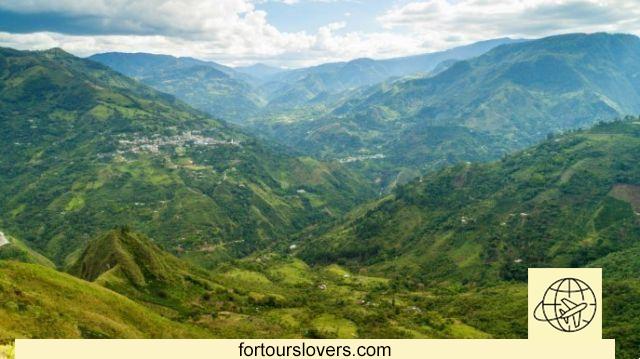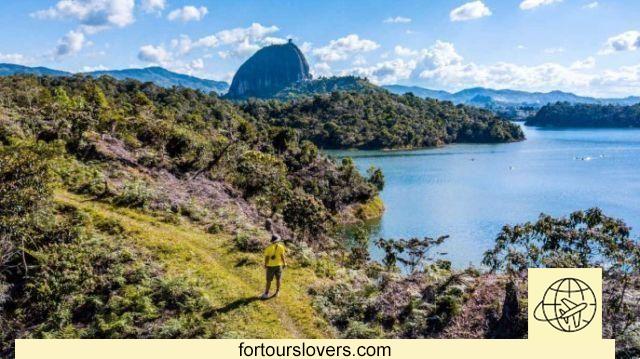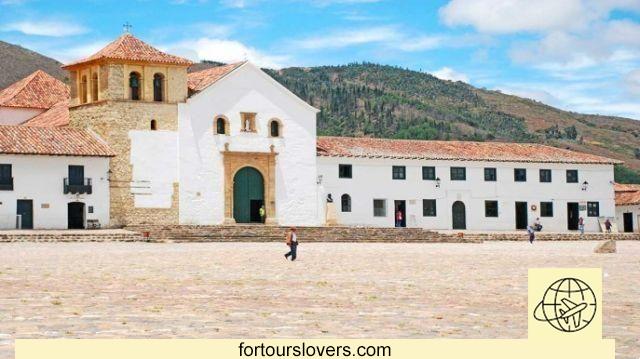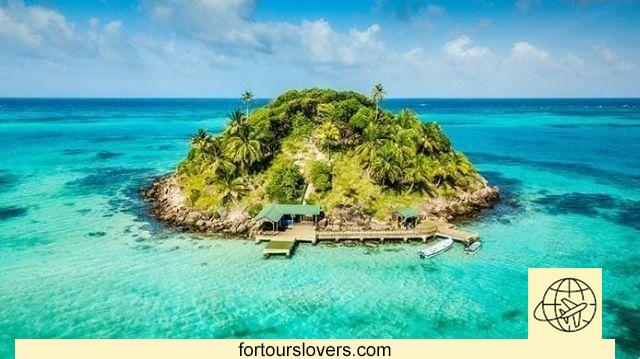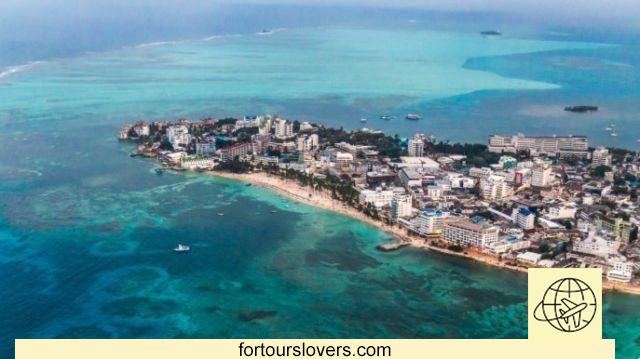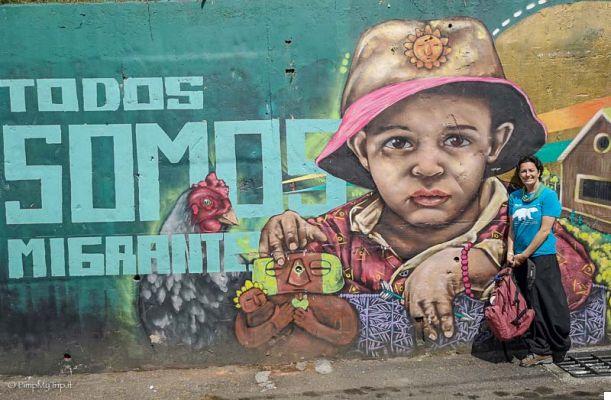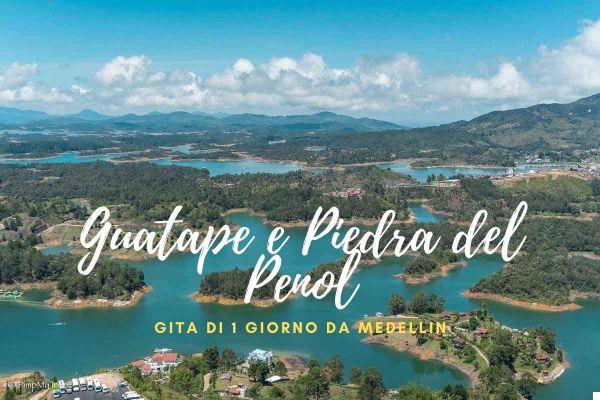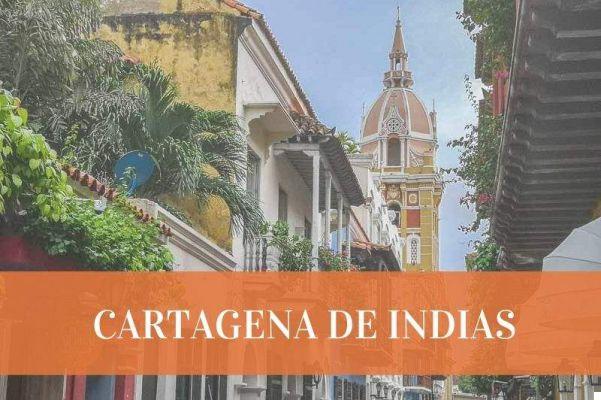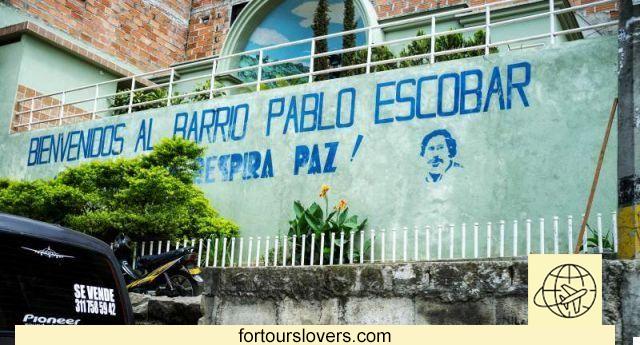Il Tayrona National Park, a stunning national park on Colombia's Caribbean coast, is just an hour's drive from Santa Marta. This essential guide offers my best travel tips and advice on things to see and do in the National Park, where to stay, what to eat, how much it costs and much more.
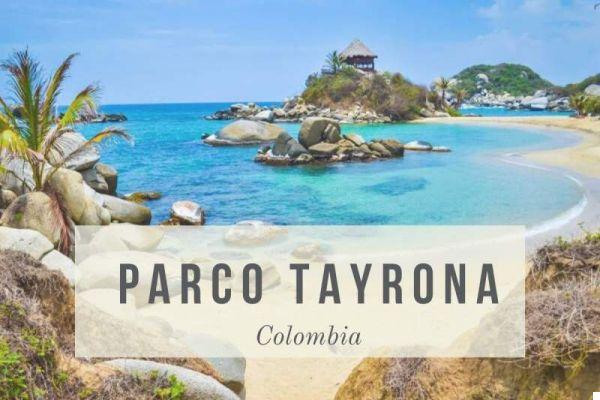
Tayrona Park is an immensely beautiful place with its stunning beaches surrounded by coconut palms and dense rainforest. And behind it are the steep hills of the Sierra Nevada of Santa Marta, the highest coastal mountain range in the world.
Before I even left for my trip to Colombia, I knew that one of the places not to be missed was the wonderful Tayrona Park.
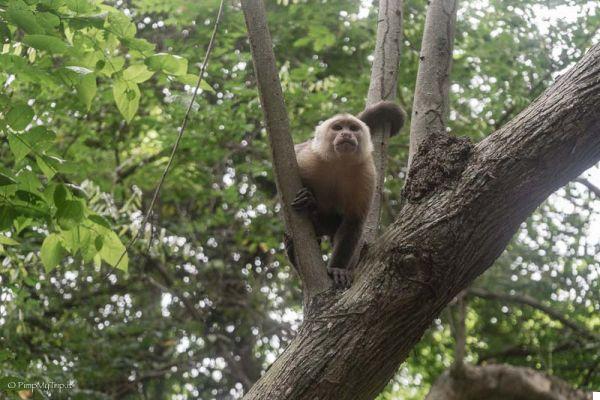
Of course, having heard so much about it in the past, I wanted to go see it for myself! I included it on my Colombian wish list and started planning the trip.
- Where is Tayrona National Park located?
- How to get to Tayrona National Park
- Prices and admission to the Park
- Where to sleep in Tayrona National Park
- Where to stay inside the Park: in a tent, in a hammock or in a hotel room?
- 1. In the hammock
- 2.In the tent
- 3. In hotel
- Where to eat: restaurants and eateries
- What to see and do and the best beaches
- What to bring to Tayrona National Park
- Advice
Where is Tayrona National Park located?
The park is located on the Caribbean coast of Colombia, about 1 hour, 1 hour and a half from the city of Santa Marta.
Santa Marta is not a city where you can spend more time than necessary: it is ugly and lately also dirty and dangerous. The city beach is terrible. Consider staying here only as long as you need to go to Tayrona, trust the park is wonderful, it's really worth it.
The national park is in fact a treasure for those interested in nature and its fascinating wildlife.
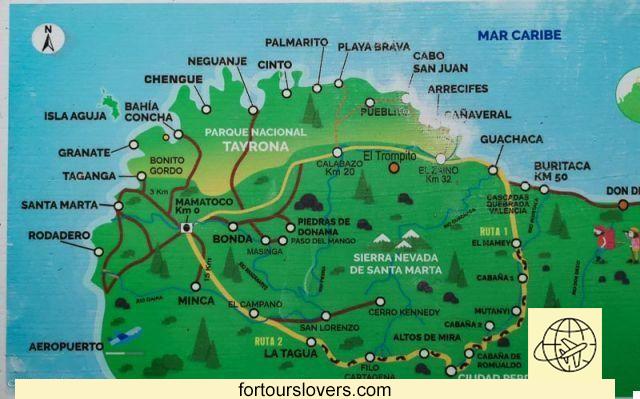
Many know it for its beaches: Tayrona Park, however, is a huge national park that is much more than just beaches. There is wonderful wildlife to see in the jungle with over 60 mammal species and around 400 bird species.
Even if you're not a huge fan of animals, you'll still love the park! Tayrona is also a great destination for those who just want to relax on some of South America's most beautiful coasts, get a good digital detox (there's no internet in the park), and get close to nature.
Here you will find the most beautiful beaches in Colombia (apart from those on the island of San Andrès)
How to get to Tayrona National Park from Santa Marta
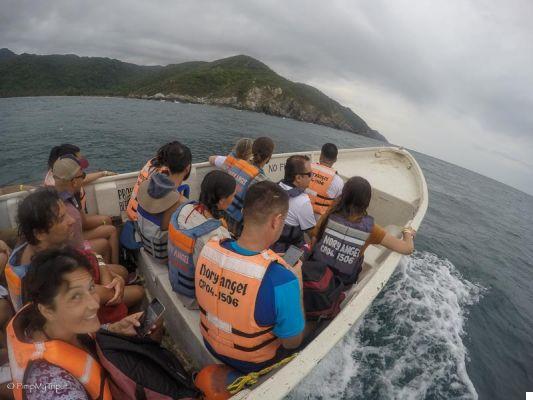
Santa Marta is the closest city to the National Park.
The public bus to / from Santa Marta costs 7.000 COP (around € 2) and will only take an hour to get there. You can take the bus from the station in front of the Mercado.
The buses leave you at the entrance of the Park where you will have to buy the ticket (remember your passport). Once you have your ticket you have two choices:
1 - walk to the beginning of the path along the paved road. NOT RECOMMENDED !!! It takes a lot of time so, unless you plan to sleep inside the Park, opting for this choice is nonsense (you waste a lot of precious time that you could use on the beaches)
2 - Once inside the park, there is an optional shuttle bus for 3.000 COP (less than 1 €) which will take you from the main entrance to the starting point of the excursion - much better as a choice.
For the return it is also possible to take a boat from the beach of Cape San Juan which takes you to taganga. Apart from the experience I had (which was not the best with the boat that broke in the middle of the sea and we had to transfer to another boat already full of people, then sailing for at least two hours in terrible conditions and dangerous), this is a good choice and gives the opportunity to observe the wild coast of the park from the sea.
I took THIS PACKAGE which includes round trip (it costs little, around 12 € and you can choose between different options between boat and bus) and honestly I recommend it to you!
Alternatively you can take part in a tour that includes transportation, a guide and entrance ticket. Joining a tour is a great choice, as transportation is on time and fast and takes you to the start of the hiking trail.
Prices and admission to the Park
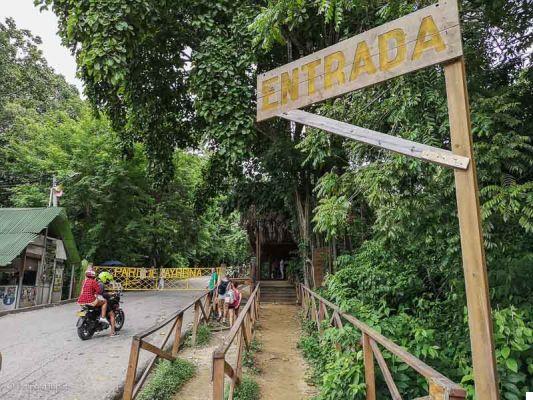
There are two entrances to the Park:
- El Backpack - Main entrance
- Squash
The entrance fee is 56.000 COP (about € 15) for foreigners, while for Colombians the price is lower.
There is also a mandatory insurance fee that you have to pay when you enter the park, which is 2.500 COP per day (less than € 1)
Please note that the price here is what I paid: the entrance fee varies according to the season.
There is a fixed number of visitors who can access the Park daily. This means buying your ticket in high season in advance if you don't want to stay out!
You have two ways to buy the ticket, indeed 3:
- From the Park's official website
- At the entrance (you can only pay in cash)
- Take part in a tour like this with guide, transport and entrance included
DON'T FORGET YOUR PASSPORT!
I don't know what would have happened if I had left my passport at my hotel in Santa Marta (which is what I usually do if I go hiking). Luckily, I read a notice before I left. The cash desk requires a passport at the park entrance when purchasing the ticket. Don't forget that, please!
Since the park's environment is fragile and the number of visitors grows rapidly, it was decided that from 2017 the park it will close its gates every year from the end of January to the end of February.
The reason for the closure was an attempt to purify Mother Nature and the decision was made by Colombia's largest indigenous community.
Although the loss of revenue must have been significant, the results on flora and fauna have been incredibly positive after the first year.
Beware that on some blogs it says that to enter Tayrona Park Yellow fever vaccination is mandatory: not true, vaccination is recommended but not mandatory (otherwise I would have stayed out). In any case, always keep up to date on developments on the Tayrona park official website at this link.
Where to sleep in Tayrona National Park
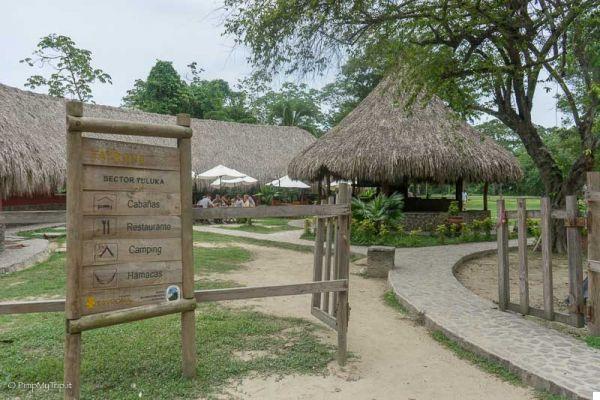
Perhaps one of the most difficult decisions to make on a visit to Tayrona National Park is where to sleep. In fact, you can choose whether to sleep inside the park or outside. Furthermore, if you decide to sleep inside the park, you can choose between a hammock, a tent or a hotel room!
1. Staying inside the Tayrona National Park
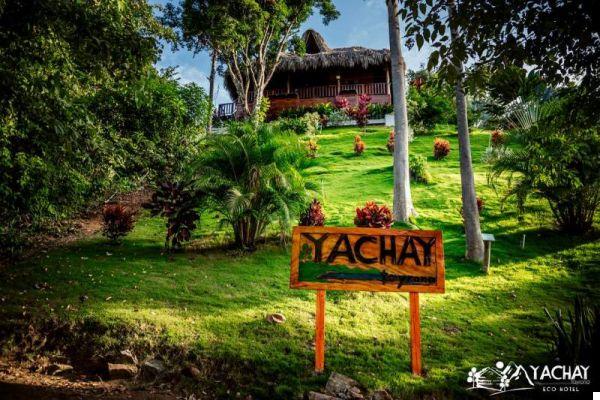
If you are planning to visit the national park for more than one day, it is advisable to sleep inside the park itself so as not to have to pay twice the entrance and to avoid travel times.
Accommodation options in Parque Tayrona boil down to staying in one of the park's hotels, setting up a tent at one of the campsites, or staying overnight in a hammock.
For those who prefer comfort, Ecohotel Yachay Tayrona is the way to go. This hotel offers beautiful views of the surrounding jungle and great food thanks to its gourmet restaurant.
If you are looking for a balance between comfort and cost, consider theHotel Jasayma Parque Tayrona. This eco lodge is full of character and thanks to its staff and surroundings, you are sure to fully enjoy your stay here.
2. Staying outside Tayrona National Park

If you plan to spend a single day in Tayrona National Park, then your options go beyond the park, from Santa Marta a El Backpack, the Taganga.
Staying outside the park can be quite comfortable, since transportation to and from the park is straightforward. Taganga is the cheapest place to stay, but it is terribly ugly and dirty (and when I was there I was also told dangerous).
However, Santa Marta is the big city in the area, with plenty of accommodations and facilities and a vibrant nightlife.
To envelop yourself in a luxurious environment, stay atHotel Boutique Don Pepe in the center of Santa Marta. With beautifully appointed bedrooms and private terraces, it will be easy to unwind after a long day of exploring.
I have stayed at the Casa del Leda, a Kali Hotel: a fantastic 4 * hotel right in the center of Santa Marta but in a quiet area with a nice restaurant, two small swimming pools and a wellness center… in short, at the cost of 70 euros the double room is really a bargain.
For exceptional value for money, it's hard to say no to Hotel Suite Boutique El Cactus. Located in the center of Santa Marta, the rooms at this 4-star hotel are spacious and the staff are exceptionally welcoming.
A great choice for backpackers just outside the park is Eco Hostal Yuluka. With dorms and private rooms, there's plenty to enjoy here, including the pool and in-house restaurant.
The other excellent choice just outside the park (always in El Sedia so to speak) is the Quetzal Dorado Eco-Lodge, one of my favorite places, with a truly incomparable view of the jungle!
For more accommodation options in or near Tayrona National Park, check out Booking.com at this link. They continuously offer the best rates and their personalized service is perfect, I always use it.
Where to stay inside the Park: in a tent, in a hammock or in a hotel room?
And now, the big question is: if you want to stay inside the park at least one night, where you can stay?
Your sleeping options are a hammock, a tent (for rent or yours), or a hotel.
Let's talk about each sleep choice in a little more detail.
1) In the hammock
Hammocks, such a romantic way to sleep in the park - lazily sipping your beer swinging under a palm tree, waking up to the sound of the waves ...
If that's how you imagine it, let me tell you a couple of things.
Let's start with the fact that all hammocks are located in a large common room (NOT facing the sea) separated from the outside by a mosquito net. And the cleanliness is not exactly the best.
Also keep in mind that despite the mosquito nets you may have to deal with some insects. In short, if you don't like insects, avoid them.
2) In the tent
The park is dotted with campgrounds where you can choose whether to sleep with your tent or whether rent one.
Hammocks and tents have nearby toilets and showers. The structures are very basic, but suitable for those who know how to manage and do not have many pretensions.
Note that the showers are only open at certain times and that there is not always hot water!
Please note: if you want to stay in the campsite, I highly recommend you arrive as soon as possible, first of all because the sun is strong and it will be unbearably hot, and secondly, you may not find available seats.
3) In hotel
If you don't feel like a big adventurer you still have the option to sleep in a hotel (keep in mind that it is very expensive)
- eco-habs in Tayrona they are the most comfortable (and therefore expensive) option to spend the night inside the park.
The 14 “eco-habs” are wooden bungalows located in the same area on the beach of Cañaveral and each of them can accommodate up to 3 or 4 people.
From there, you can easily access both east and west of the park for further exploration and also La Piscinita - the swimming beach in the park.
They have a spa, a restaurant, and a taxi that can take you from Cartagena de Indias, Santa Marta, Tanganga or from the airport to the eco-habs inside the park.
Where to eat: restaurants and eateries
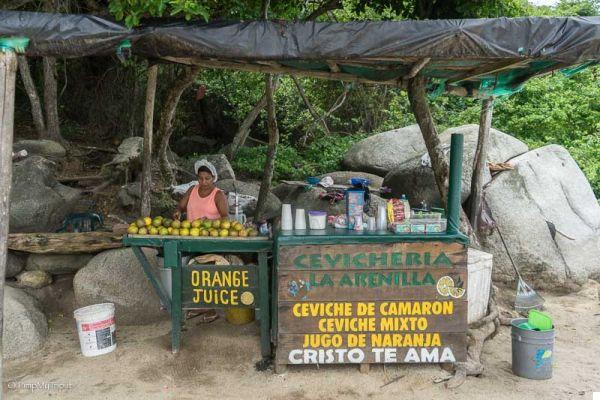
Remember, when in the park you have some options for eating:
1 - the kiosks on the beach they offer local food, patacones and ceviche: it is cheap, but beware that it could, as happened to me, get a gastroenteritis to leave you for the next two days sitting on the… vabbeh you understand me.
2 - hotels and campsites offer restaurant: it is expensive (relative to the fact that you are in Colombia), but you should stay safe enough.
For example, the Cabo San Juan restaurant charges COP 7.000-15.000 for breakfast and COP 18.000 - 40.000 for lunch and dinner. note that the restaurant closes for a few hours in the afternoon after lunch and people queue for dinner in the evening. You may have to wait a bit.
A third alternative, if you are only staying in Tayrona for one day, is to bring your own packed lunches. Along the paths, however, you will find guys selling cold drinks: in any case try the maracuja ice lolly, so good that I still dream of it at night!
In terms of water, I am a big advocate for reducing the use of plastic (if you go to Taganga you will realize why) and so we have brought our fantastic Water-to-Go travel filter bottles.
Remember that staying hydrated in such humid conditions is essential so bring plenty of water on your first day (2 liters per person per day is a good rule of thumb). It is also possible to buy drinks (beer, gatorade, water and soft drinks) at campsites during the day and in the evening, at kiosks or from street vendors along the trails.
Best things to do in Tayrona National Park
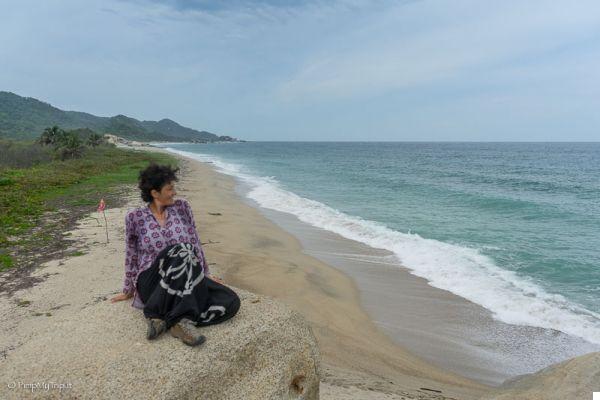
Now that you're ready to leave for Tayrona National Park, it's time to tell you what to do and what are the best beaches. Most of the things to do in Tayrona National Park are in fact the beaches to visit and the trails through the jungle for hiking.
The only thing is that, due to the treacherous currents and strong waves, not all beaches are suitable for swimming.
In some beaches swimming is forbidden, in others it is allowed but always check if the red flag is hoisted (if there is you can not swim!).
1. Cañaveral and the jungle walk
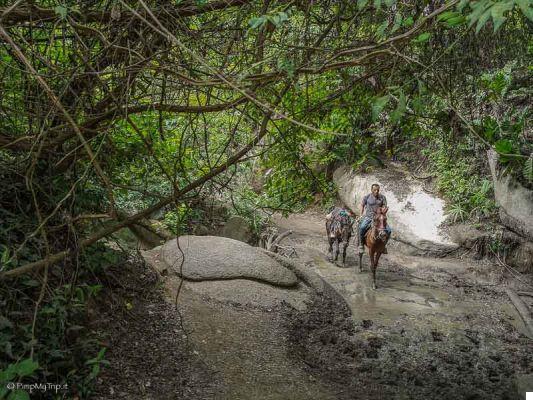
However you choose to get there, Reedbed is where the Tayrona Park coastal path begins.
As you proceed, the route will vary between gentle dirt paths surrounded by vibrant green jungle and wooden stairs built into the side of a hill covered with boulders.
Once you reach the highest points of the trail, you will be offered a splendid panorama of the coast, including that of Punta Castillete.
Beware, however, that the wooden walkways end about 1/3 of the way and the jungle path it is often covered with a lot of mud; the situation worsens where the trail crosses the horse trail. Wear comfortable hiking shoes, no flip flops also because the walkways with humidity can become very slippery!
Subsequent parts of the route will lead you to unusual beachside groves and dusty but well-marked paths, which makes the walk interesting.
2. Arrecifes Beach
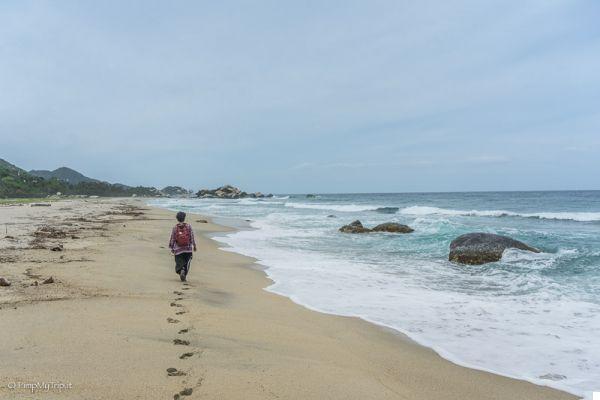
The first beach you will arrive at by taking the path is Arrecifes Beach. A long beach beaten by strong winds, with large boulders.
You will probably not see many people on this beach as you are not allowed to swim and it is one of the more exposed beaches as it is not in a bay.
The eastern end can be dangerous because there is a lagoon where caimans can be found. After the lagoon, past large rounded boulders, there is a very beautiful and sheltered beach (where you can swim). There is also a refreshment point here where you can taste patacones, grab a shrimp ceviche and have a cold drink or beer.
3. The swimming pool
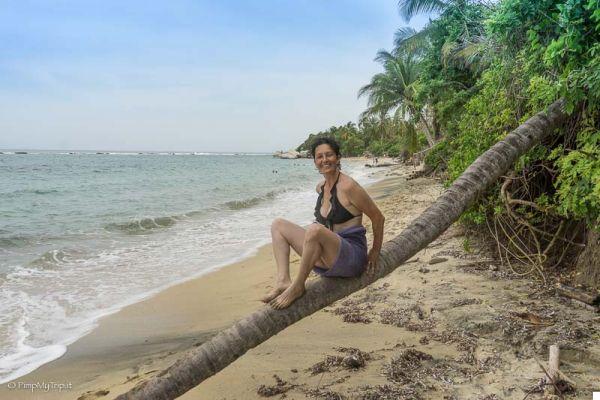
For those who can no longer wait for a swim, The pool is the place where you can finally dive.
With a name that literally translates as "the pool," the warm Caribbean waters of La Piscina are ideal for swimmers of all abilities.
Sheltered by rocks offshore (a kind of reef where you can snorkel, the water here is calm and reasonably shallow, in other words perfect and suitable for children. More than other beaches, this beach seems to be the ideal destination for children. locals visiting Tayrona park.
4. Cabo San Juan
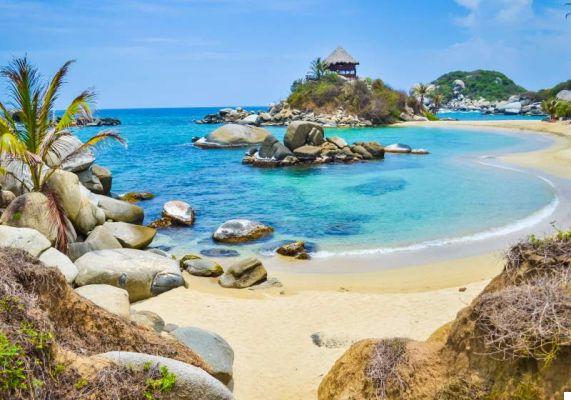
Di Olga Kot Photo /
Cape San Juan it is undoubtedly the most famous beach in Tayrona park and the most photographed of all.
The two beaches of Cabo San Juan, two curves joined by a "V" come together at one point with huge boulders above which you will find a fantastic viewpoint and a hut full of hammocks.
With palm trees gently bordering the beach, calm, crystal clear waters, and huge amount of tropical fish, Cabo San Juan couldn't seem more like a tropical paradise.
It has only one downside… it is very crowded!
5. Brava Beach
One of the lesser known and visited beaches in the national park is Playa Brava, partly because the landscape does a great job of hiding it. This seclusion with deep jungle and hills behind it makes the beach one of the most impressive in the park.
Further west along the coast from Cabo San Juan, Playa Brava is not on the same coastal path as the others. Instead, you have to venture deep into the jungle from Cabo San Juan past the huts and the rovine di Pueblito before finding the path to Playa Brava.
As such, Playa Brava is easily accessible for those arriving through the park's second entrance in Calabazo and who have more than one day in Tayrona.
6. Bahia Concha
Unlike the other beaches in Tayrona National Park, Bahia Concha it is one that you can easily reach from Santa Marta. This is because you can actually arrive directly from the city with a tour.
The other advantage of Bahia Concha is that you don't need to enter the national park to access. However, the beach here isn't as beautiful as some of the other beaches in the park, and it lacks some of the jungle vibe found elsewhere.
7. Snorkeling a Playa Cristal
One of the best beaches for snorkeling is undoubtedly Cristal Beach: can be reached with a day tour from Santa Marta or Taganga. It's really worth going so don't forget to put it on your to-do agenda!
There are snorkeling tour in playa cristal like this one everyday.
8. Other beaches in Tayrona National Park
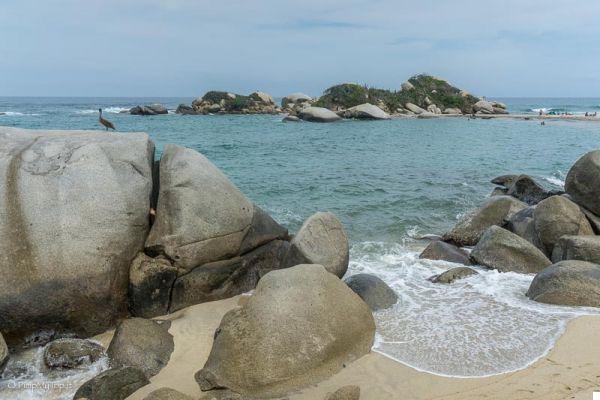
We have only touched on some of the beaches of Parque Tayrona, mainly those that are easy to reach or that allow you to swim. But there are many more to explore if you have enough time.
Canaveral Beach it's a small beach located below the Ecohabs Tayrona hotel, while Playa Castilletes has a bit of a wild, remote vibe.
Tayrona is a large national park and there are many other beaches to the west that are only accessible by boat. But the reward for those who have the perseverance and tenacity to reach them is that their isolation also makes them some of the most beautiful beaches in the park.
Chengue Bay, Gairaca beach e Cristal Beach fall into this category, with Playa Cristal a nice place to snorkel (but you get there easily with a SNORKELING TOUR like this one.
Then there are places like Nudist Beach, Tayrona National Park Nudist Beach: This beach doesn't seem to attract many visitors, although it is possible to swim there when lifeguards are present.
9. Trekking to the Pueblito
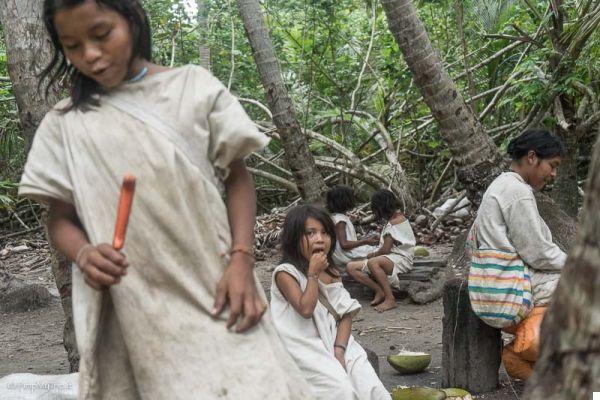
The most famous and easily accessible trek is the one that starts just behind the Cabo San Juan campsite.
The path leads from the sea through the jungle to a place called Village.
The route lasts an hour and a half and requires strength and determination: it is a bit challenging, first of all, due to the heat (bring a lot of water - in Pueblito there is a small stall where you can buy something to drink) and, in second, it's uphill (don't wear flip flops).
The entire route runs through a tropical forest that is filled with mysterious (sometimes frightening) sounds and unexpected movements.
Pueblito is an archaeological site, where you can enjoy the peaceful atmosphere of the ruins.
The jungle has already engulfed most of the village, so you might not be impressed with the size of the site, but it's an important place both historically and spiritually.
Overall, the path is easy to follow.
10. Trekking of the 9 Stones
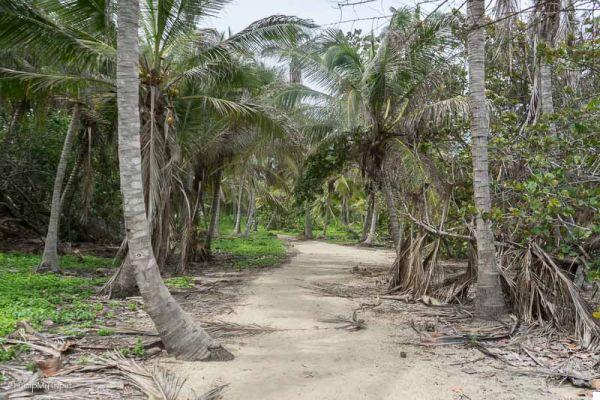
Another easy hike is right at the start of Tayrona National Park in Castilletes.
The excursion is called 9 Stones (9 stones). It is primarily a jungle trail (a 3,5km loop) with some great ocean views and during which you have a high chance of encountering wildlife.
This trail is named after the nine perfectly carved egg-shaped stones with a hole - this is how the native tribes counted the time. The whole hike takes about an hour to complete.
What to bring to Tayrona National Park
Especially if you decide to do at least two days inside the park, it is important to know what you need to bring. Count that you will walk a lot for which "less is more".
In fact, you certainly don't want to be devoured by mosquitoes, but you don't want to have to walk in the heat with so many kilos in your backpack.
Here is something essential you should definitely not forget:
- Sunscreen
- Acqua (you can buy it, but you may have to walk an hour before you meet the first seller)
- mosquito repellent - absolutely essential!
- sunglasses
- swimsuit
- long sleeved shirt
- a flashlight
- a hat
- first aid kit
- a roll of toilet paper
Also, good hiking shoes and flip-flops for using the common showers or on the beach.
Tayrona Park: Final Tips
Here, lastly, a series of tips after my experience!
- Bring comfortable shoes with grip: trails can be slippery
- Respect nature and its inhabitants, take away your waste and do not feed the animals
- Follow the park rules!
- There is no internet in the park: drop your smartphone and relax
- Remember your passport
- Bring cash enough: there are no ATMs in the park!
- In the park you can snorkel: you can rent the mask, but if you have one, bring it
- Make a nice one travel insurance
- Plan enough time: two days are good
- Try to get to the park as soon as you can, you will avoid the queues and for a while you will have the park just for you and for a few others
- Comfortable clothes because you will walk a lot
- If you want to save bring your packed lunch
- Check before the park is not closed. As I said before there are scheduled closures, but you may also find it closed at other times of the year
- Don't bring too many things, try to make your backpack as light as possible
- Book the night (if you want to sleep inside the park) in advance or go to the campsites as soon as you can, otherwise you may not find a place.
- The park is a sacred place for the indigenous community: respect and do not photograph people without their consent.
Here ends my guide to Tayrona Park: I hope it helps you to better organize your trip. If you have other tips or things to add let me write it in the comments and good trip!




